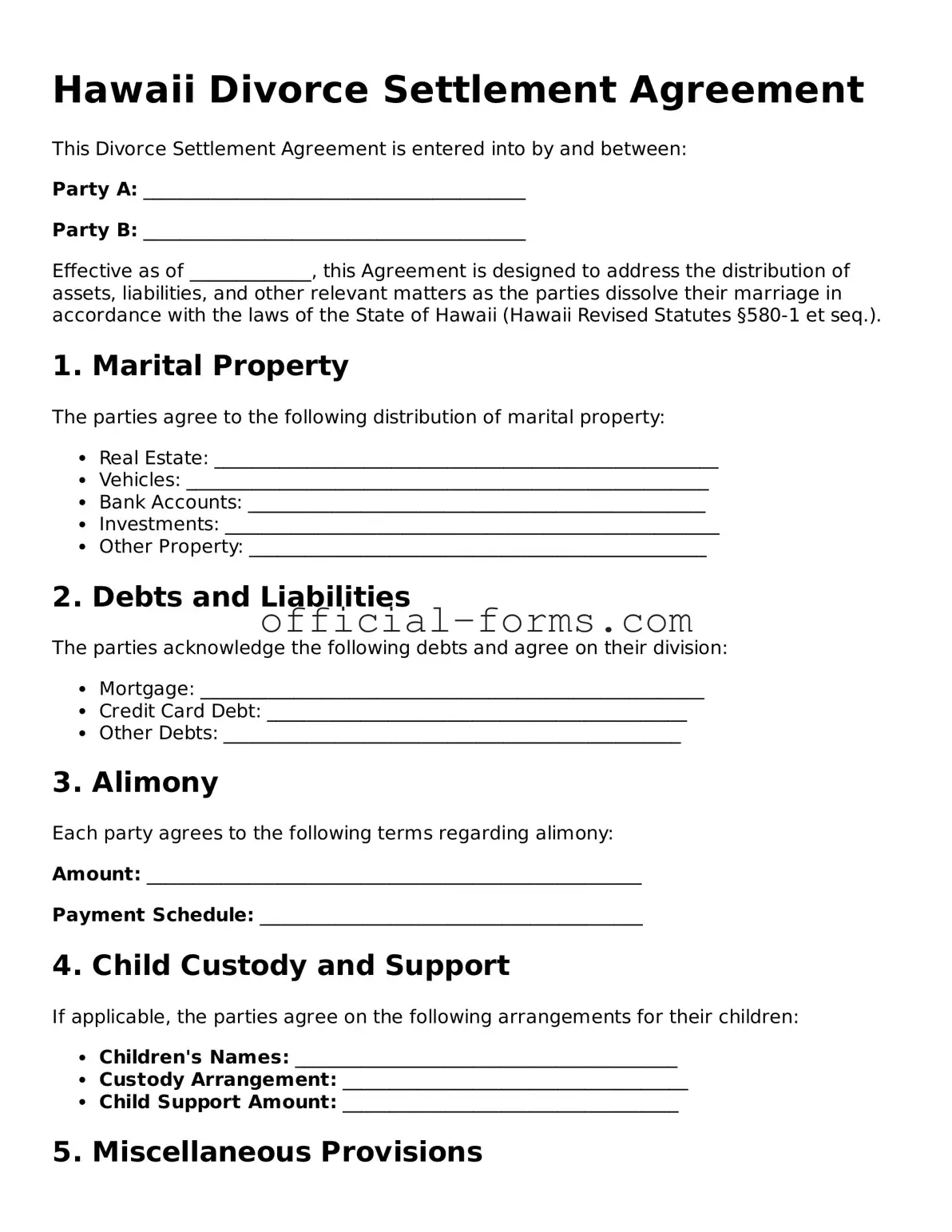Filling out the Hawaii Divorce Settlement Agreement form can be a daunting task. Many individuals make mistakes that can delay the process or lead to complications down the line. One common mistake is failing to provide complete and accurate information. When details are missing or incorrect, it can cause confusion and potentially lead to a rejected application.
Another frequent error is neglecting to review the terms of the agreement thoroughly. It is essential to understand what each section means and how it affects both parties. Overlooking specific clauses can result in misunderstandings later, especially regarding asset division or child custody arrangements.
Many people also forget to include all assets and debts. It is vital to list everything owned, including bank accounts, property, and loans. Omitting items can lead to disputes or an unfair settlement, which may cause future legal issues.
In addition, some individuals may not consider the tax implications of their settlement. Certain decisions can have significant financial consequences. Consulting with a financial advisor before finalizing the agreement can help avoid unexpected tax burdens.
Another mistake is not having a witness or not notarizing the agreement when required. Some sections of the form may need a signature from a witness or a notary to be legally binding. Failing to do so can render the agreement invalid.
People sometimes rush through the process, thinking they can finalize everything quickly. This can lead to overlooking critical details or making hasty decisions that one might regret later. Taking the time to carefully consider each part of the agreement is crucial.
Moreover, miscommunication between parties can lead to errors. It is important to have open and honest discussions about the terms of the settlement. When both parties are on the same page, the likelihood of mistakes decreases significantly.
Lastly, individuals often forget to keep copies of the completed form and any supporting documents. Having a personal record is essential for future reference and can help resolve any disputes that may arise later. Keeping organized records can save time and stress down the road.
